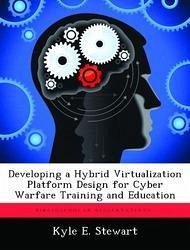Students studying topics in cyber security benefit from working with realistic training labs that test their knowledge of network security. Cost, space, time, and reproducibility are major factors that prevent instructors from building realistic networks for their students. This research explores the ways that existing virtualization technologies could be packaged to provide a more accessible, comprehensive, and realistic training and education environment. The research will look into ways of merging two existing virtualization methods in order to leverage the unique benefits that each type of virtualization techniques provides. The first method, called operating system virtualization, provides a highly memory efficient way to run virtual machines, provided that all virtual machines run the same operating system kernel. Full virtualization requires a larger memory footprint, but allows arbitrary operating systems to be virtualized. Combining these two techniques will allow for larger, more diverse training environments for modeling and training in the cyber domain.
Hinweis: Dieser Artikel kann nur an eine deutsche Lieferadresse ausgeliefert werden.
Hinweis: Dieser Artikel kann nur an eine deutsche Lieferadresse ausgeliefert werden.








